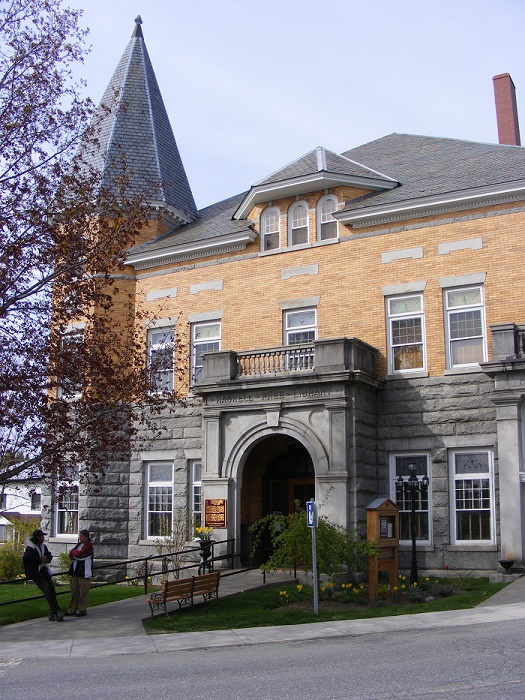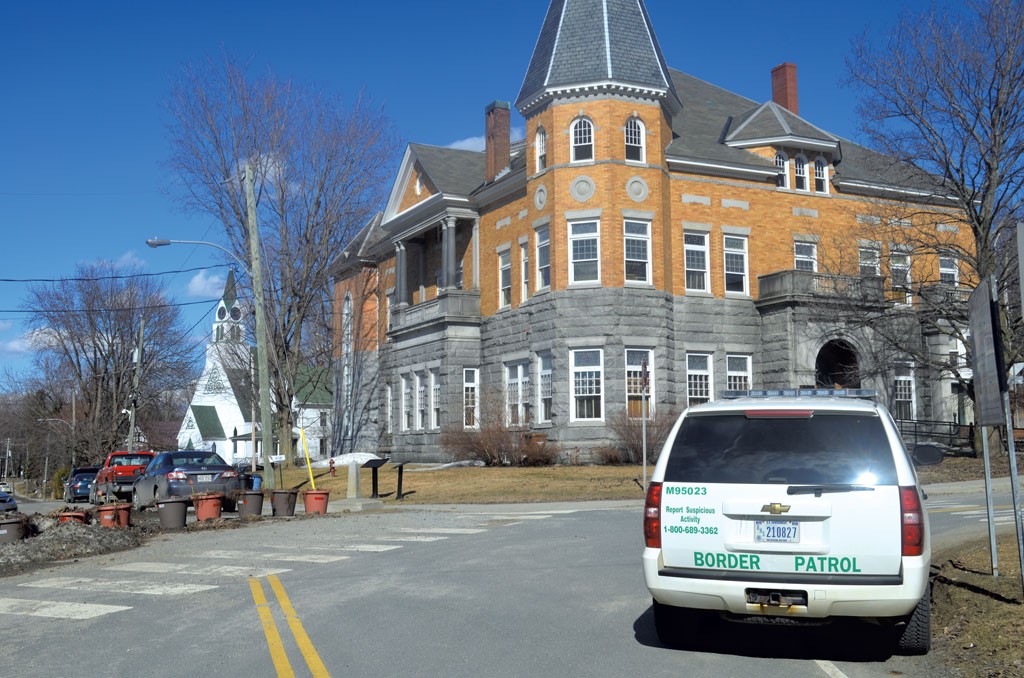

The area around the grand old library has become increasingly surveilled by both Homeland Security and the Royal Canadian Mounted Police, with nearby streets lined with cameras.
HASKELL FREE LIBRARY SERIES
and Canada, and created a new series of checkpoints and regulations. Over the past several years, national security measures have blocked off the unguarded streets which ran between the U.S. The librarians try to keep politics out of the cultural center as much as possible, but even they can’t escape the reality of residing on the border. The border line between Stanstead, Quebec and Derby Line, Vermont. After a small fire in the 1970s incited a fight between American and Canadian insurance companies, the parties insisted on bringing in a surveyor to mark the exact border so that they knew who would have to pay out next time. The line itself is a relatively recent addition. A line of electrical tape on the floor demarcates the exact international border.

The elegant fireplace is currently being used to display picture books.
HASKELL FREE LIBRARY WINDOWS
The library downstairs is a bit less ornate–there aren’t any cherubs–but there are carved wooden fireplaces, large bay windows topped with stained glass, and built-in oak cabinets. side, though, so in all likelihood you’ll sit in America and watch performers located in Quebec.* But committed devotees have kept it alive, and during the summer season you can still catch a show or listen to live music. Of course, Haskell couldn’t have predicted the advent of moving pictures, which immediately cut into opera house profits, and so the Opera House has limped along for nearly a hundred years, supported by the more modest public library below it. At the time, entertainment-starved Vermonters would happily travel many miles through all kinds of weather to see a show. She went all out for the opera house: elegant painted backdrops, plaster cherubs, tin ceilings, a carved balcony, a painted curtain depicting Venice, and a proscenium arch with gold filigree. When Martha Haskell decided to build an elaborate, turreted, neoclassical building out of local granite and brick, the plan was for the second floor opera house to fund the first floor library. The exterior of the Haskell Free Library and Opera House. Today, it is one of the only libraries in the world that exists and operates in two countries at once. But against all logic, the Haskell Free Library and Opera House continues to serve both Vermonters and Quebecers, and remains a transnational space that residents from both the U.S. Gone are the days when a local resident could walk across the dividing line with a smile and a wave. In the last several years, though, the common culture of the two towns has been eroded, largely due to the increased emphasis on securing the U.S. They also shared the same cultural center, the Haskell Free Library and Opera House, an ornate Victorian edifice built deliberately on top of the international border in 1901 by the Canadian wife of a wealthy American merchant.


Citizens drank the same water, worked in the same tool factory, played the same sports (primarily curling), fought in the same world wars, and were born in the same hospital in nearby Newport, Vermont. But the residents of the border towns didn’t particularly mind, mostly because they ignored it altogetherįor around 200 years Derby Line, Vermont, and Stanstead, Quebec, essentially functioned as one town. state of Vermont and the Canadian province of Quebec were drunk, because the border lurches back and forth across the 45th parallel, sometimes missing it by as much as a mile. Rumor has it that the 18th-century surveyors who drew the official line between the U.S.


 0 kommentar(er)
0 kommentar(er)
